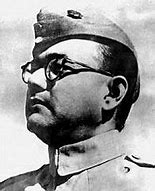Netaji Subhas Chandra Bose: A Revolutionary Icon

Discover the life and legacy of Netaji Subhas Chandra Bose, a visionary leader in India’s struggle for independence. Explore his inspiring journey today!
Trending News Fox, Digital Desk Team, Kolkata
Edited by Saibal Bose
Netaji Subhas Chandra Bose: A Revolutionary Icon
Subhas Chandra Bose, affectionately called “Netaji,” is one of the most prominent and enigmatic figures in India’s struggle for independence. His leadership and charisma continue to inspire. His unwavering commitment to the cause of freedom and his bold strategies continue to inspire generations.
Early Life and Education
Subhas Chandra Bose was born on January 23, 1897, in Cuttack, Odisha. He was the ninth child of Janakinath Bose and Prabhavati Devi. Bose was a brilliant student. He graduated from the University of Calcutta. Then, he traveled to England to take the Indian Civil Services (ICS) examination. Bose excelled in the exam. Yet, he chose to resign from the prestigious service. He was determined to serve his country and free it from colonial rule.
Ideological Differences
Bose initially worked under the leadership of Mahatma Gandhi and the Indian National Congress (INC). But, ideological differences soon emerged. While Gandhi advocated for non-violent resistance, Bose believed in more aggressive and direct approaches to achieve independence. These differences led him to resign from the Congress presidency in 1939. He formed the Advance Bloc afterward to unite anti-colonial forces.
Formation of the Indian National Army (INA)
Bose’s most significant contribution to India’s freedom struggle was his role in reviving and leading the Indian National Army (INA). During World War II, Bose sought assistance from Axis powers including Germany and Japan to fight against British imperialism. His famous slogan, “Give me blood, and I will give you freedom,” inspired thousands of Indians. Many of them joined the INA. Bose’s efforts culminated in the INA’s campaigns in Southeast Asia, though these ultimately met with mixed success.
Azad Hind Government
In 1943, Bose established the Provisional Government of Free India (Azad Hind) in Singapore. This government had the INA as its military wing. This government was recognized by several Axis powers and even issued its own currency and postage stamps. Despite facing many challenges, Bose’s leadership instilled a sense of pride and determination among Indians.
Legacy and Controversy
Netaji’s untimely and mysterious death in a plane crash in 1945 remains a topic of debate and speculation. Regardless of the circumstances surrounding his death, his legacy endures as a symbol of courage, determination, and patriotism. Bose’s life and work remind us of the power of visionary leadership and the sacrifices required for the greater good.
Conclusion
Netaji Subhas Chandra Bose relentlessly pursued India’s freedom. His revolutionary spirit makes him a towering figure in history. His vision of a free and self-reliant India continues to resonate, inspiring countless individuals to strive for justice and equality. As we honor his memory, we should learn from his life. These lessons can help us face today’s challenges with courage and resolve.
Discover more from Trending News Fox
Subscribe to get the latest posts sent to your email.




